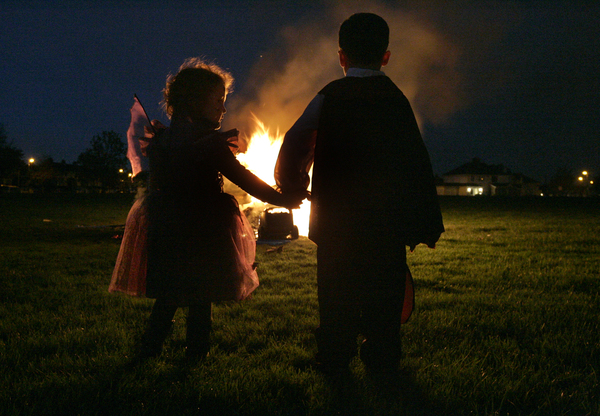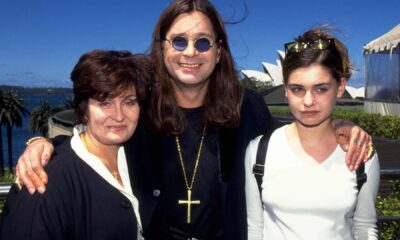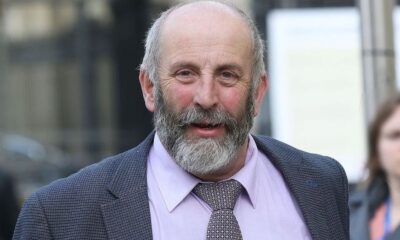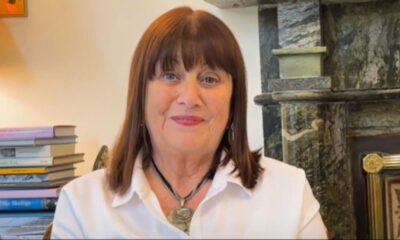Health
Professor Luke O’Neill Explores the Science Behind Halloween Traditions

This week, Professor Luke O’Neill examined the historical and scientific aspects of Halloween on the program “Show Me the Science.” The holiday’s origins can be traced back to the Celtic festival of Samhain, an ancient Irish celebration that marked the onset of winter. According to O’Neill, this period was viewed as a “dead time” when the boundary between the worlds of the living and the dead was perceived to be particularly thin.
O’Neill emphasized that the Celts celebrated this transition in various ways across Europe. A significant feature of these festivities involved lighting bonfires. “That was to mark the occasion, first of all, secondly as a protector,” he explained. The Celts interpreted the death of plant life during winter as an indication of interaction between the living and the dead.
“It wasn’t necessarily seen as ghosts frightening people; it was more to do with connecting with our dead ancestors,” O’Neill noted. He pointed out that many cultures have rituals that foster connections with the deceased during this seasonal change. He continued, “Remember, it was obviously the boundary between living things and dead things because winter was coming on. That was the time to mark this occasion with the wearing of masks and costumes.”
In discussing the contemporary practices associated with Halloween, O’Neill suggested that the “scary” rituals serve a psychological purpose. These activities help individuals desensitize themselves to fear. “Of course, in Hollywood horror movies, you get a big spike of adrenaline there, and then you get endorphins afterwards,” he stated. Research indicates that the body releases endorphins in response to fear, contributing to a feeling of relief following the initial fright.
O’Neill elaborated on the physiological response: “They’ve measured this in people in the saliva – the endorphins make you feel fine afterwards.” He contrasted this harmless thrill with real dangers, stating, “Of course, if it’s a real risk, that’s a different story.” In the context of Halloween, he believes that the thrill of encountering a masked figure is not genuinely threatening. “We know somebody with a mask isn’t going to really harm you – at least we hope not,” he added.
Ultimately, Professor O’Neill’s insights reveal how Halloween traditions are rooted in ancient practices while simultaneously serving modern psychological needs. The blend of historical significance and contemporary celebration continues to shape how Halloween is experienced today.
-

 Top Stories3 months ago
Top Stories3 months agoTributes Surge for 9-Year-Old Leon Briody After Cancer Battle
-

 Entertainment4 months ago
Entertainment4 months agoAimee Osbourne Joins Family for Emotional Tribute to Ozzy
-

 Politics4 months ago
Politics4 months agoDanny Healy-Rae Considers Complaint After Altercation with Garda
-

 Top Stories4 months ago
Top Stories4 months agoIreland Enjoys Summer Heat as Hurricane Erin Approaches Atlantic
-

 World5 months ago
World5 months agoHawaii Commemorates 80 Years Since Hiroshima Bombing with Ceremony
-

 Top Stories3 months ago
Top Stories3 months agoNewcastle West Woman Patricia Foley Found Safe After Urgent Search
-

 Top Stories5 months ago
Top Stories5 months agoFianna Fáil TDs Urgently Consider Maire Geoghegan-Quinn for Presidency
-

 World5 months ago
World5 months agoCouple Convicted of Murdering Two-Year-Old Grandson in Wales
-

 World5 months ago
World5 months agoGaza Aid Distribution Tragedy: 20 Killed Amid Ongoing Violence
-

 World5 months ago
World5 months agoAristocrat Constance Marten and Partner Convicted of Infant Murder
-

 Top Stories4 months ago
Top Stories4 months agoClimbing Errigal: A Must-Do Summer Adventure in Donegal
-

 Top Stories4 months ago
Top Stories4 months agoHike Donegal’s Errigal Mountain NOW for Unforgettable Summer Views









